Social Media and Networking
1 like408 views
Social Media and Networking School Presentation. The value of networking and using Social Media to develop your professional network
1 of 25
Download to read offline
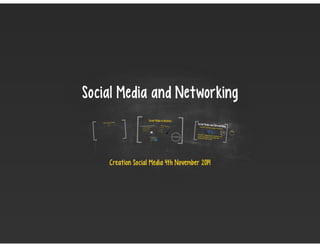
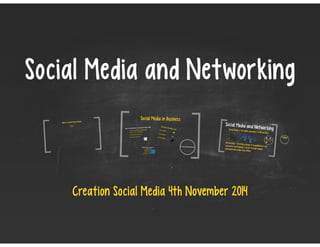
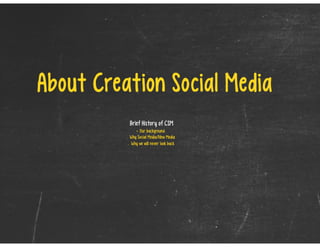

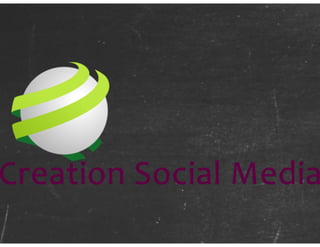
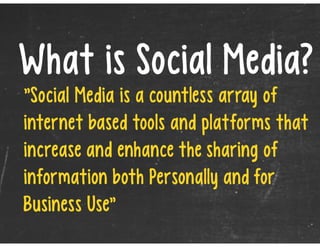


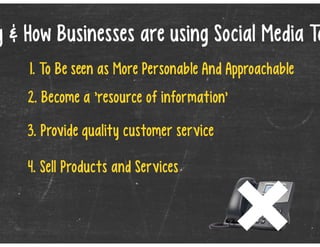
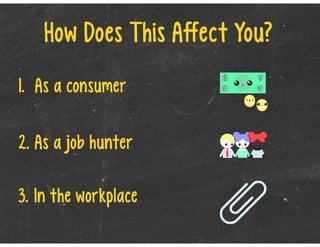
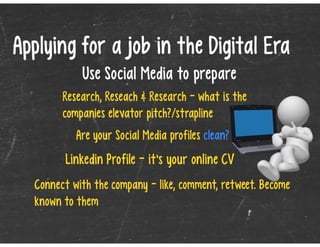
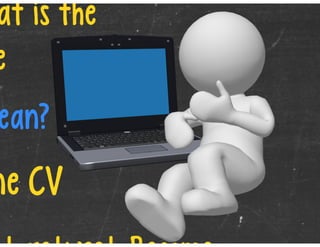
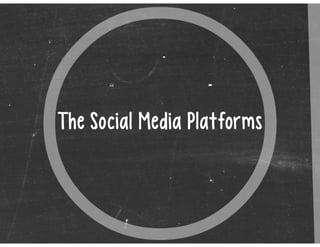
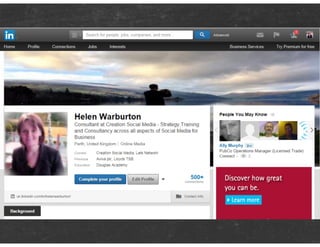

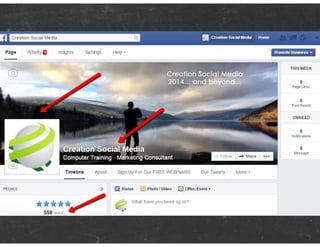
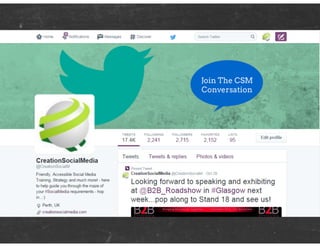
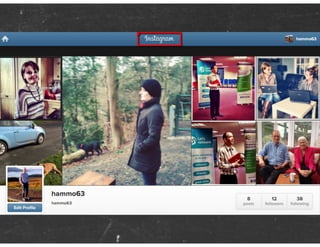
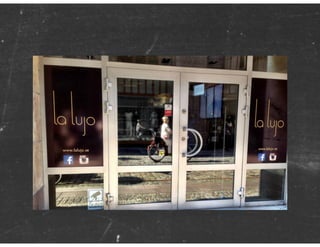
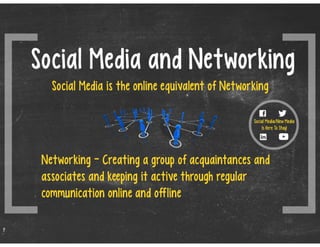

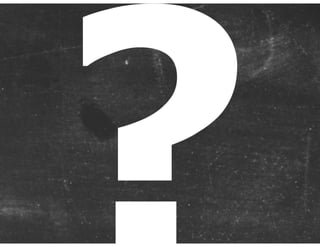
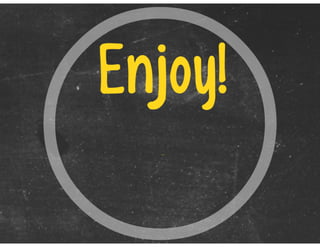

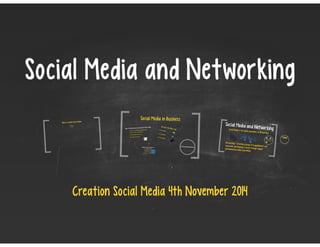
Ad
Recommended
Social Media & Networking How-To
Social Media & Networking How-Tolmdejose
╠²
The document provides guidance on using social media effectively for career networking, emphasizing the importance of maintaining a positive online presence. It outlines best practices for networking, including building authentic connections, leveraging platforms like LinkedIn and Twitter, and the mutual benefits of helping others. Key networking strategies include informational interviews, following up, and participating in events to expand one's professional circle.Massmediachapter1
Massmediachapter1Keith Forrest
╠²
The document discusses the theory of agenda setting, which posits that mass media is highly successful at telling people what to think about rather than what to think. It provides statistics on media consumption and discusses how media industries are largely profit-driven and owned by corporations. The mass media plays a role in shaping societal attitudes and priorities through agenda setting.Social Media And Networking
Social Media And Networkingkevinwoodward
╠²
The document discusses the evolution and significance of social media and networking, emphasizing that the essence of human interaction remains unchanged despite the platforms evolving. Key platforms like Facebook, Twitter, and LinkedIn are analyzed for their business advantages and user demographics. It also outlines best practices for engagement and emphasizes the importance of listening, authenticity, and helping over selling in social media strategies.Social Media Networking
Social Media Networkingseovice
╠²
Oren Todoros is a social media strategist based in Israel. He discusses how social media has transformed communication and how brands should establish a presence on major social networks like Facebook, Twitter, LinkedIn and blogs. He emphasizes that social media requires an ongoing time investment to build networks and engage audiences, but it helps raise brand awareness and can lead to new business opportunities.Communication theory power point
Communication theory power pointRawan Ehab
╠²
This document discusses communication theory, including definitions of verbal and non-verbal communication. Non-verbal communication includes body language, vocalizations, eye contact, touch, use of space, dance, signs, art, time perception. Verbal communication involves the use of words and paralanguage, the symbolic process of encoding and decoding messages. Barriers to effective communication include ambiguity, vagueness, failure to understand intentions, non-literal language, indirectness, and lack of shared backgrounds or experiences.Agenda setting theory
Agenda setting theoryrhcarte
╠²
Agenda-setting theory holds that intense media attention to certain topics increases the perceived importance of those topics. It is used in international news and mass communication to present images to the public and show how the media impacts public reaction. While critics argue a direct cause-and-effect cannot be proven, agenda-setting theory is still important to communication studies by describing how the topics and images presented in the news shape public views, since the media is how we learn about things we did not directly witness.Role of media in the society :
Role of media in the society : ckajas
╠²
The document discusses two theories of media - Social Responsibility Theory and Agenda Setting Theory.
Social Responsibility Theory proposes that media have obligations to society to provide truthful, accurate, objective and balanced information. It also discusses how media and society influence each other.
Agenda Setting Theory suggests that media have the power to influence what issues the public thinks are important by deciding what to report on and how to frame these issues. For example, media coverage of crime issues can increase public concern about crime even if actual crime rates are falling.Social Media Networking
Social Media NetworkingDerek Ross
╠²
The document outlines strategies for utilizing Facebook and Twitter for business purposes, emphasizing the importance of building customer relationships and brand awareness through these platforms. It provides insights into the history and user demographics of both social media sites and highlights successful businesses' tactics on these platforms. Key recommendations include engaging with customers, promoting products creatively, and employing targeted advertising while leveraging the vast demographic data available.Social media and networking
Social media and networkinggdeboe
╠²
1. Social media networks allow users to share content like text, images, and videos. Popular social networks include Facebook, Twitter, and LinkedIn.
2. Facebook aims to make the world more open and connected. Twitter connects users through real-time information and stories. LinkedIn connects professionals to help them achieve career success.
3. While social networks provide benefits like education, communication, and networking, they also pose disadvantages such as lack of privacy, distraction, antisocial behavior, and cyberbullying.Organizing model of communication theory
Organizing model of communication theory Kriztine Viray
╠²
This document outlines an organizing model of communication theory. It divides theories into quantitative/individual, qualitative/individual, quantitative/social, and qualitative/social frameworks. The key theories are discussed, such as behaviorism in cognitive/behavioral theories, structuralism in structural/functional theories, social phenomenology in interpretive theories, and feminism in critical theories. Interactionist theories focus on language and meaning creation through social interaction. Examples of prominent theories are provided for each framework.(2010) Social Media Networking for Seniors
(2010) Social Media Networking for SeniorsDevendra Shrikhande
╠²
The document provides an overview of social media, its popularity, and how various age groups engage with it, highlighting key statistics and safety tips. It discusses the demographics of social media users, citing the distribution of users across different platforms like Facebook, Twitter, and LinkedIn. Additionally, the document emphasizes the importance of social media safety and its potential benefits, particularly for senior citizens.3. communication theory
3. communication theoryTatenda Chityori
╠²
This document discusses several influential models of communication proposed by theorists over time. It describes Aristotle's view that the receiver determines the objective of a message. It also outlines Laswell's model that communication can be explained by "who says what to whom, in what channel, with what effect." Shannon and Weaver's transmission model introduced elements like a transmitter, receiver, and noise. Schramm's models emphasized common background/culture for correct interpretation and that communication is reciprocal with feedback.Agenda Setting Theory Journal Article Discussion
Agenda Setting Theory Journal Article DiscussionAmelia Friedrichs
╠²
The document summarizes agenda-setting theory in mass communication. It defines agenda-setting as the ability of media to influence the importance of issues in the public. The theory originated in the 1920s and was formally developed by McCombs and Shaw in their 1972 study of the 1968 US presidential election, which found that voters' perceptions of important issues matched the media's coverage. The document also discusses how agenda-setting relates to priming and framing effects and explains differences between these concepts.Explaining Situational Crisis Communication Theory (SCCT)
Explaining Situational Crisis Communication Theory (SCCT)Timothy Coombs
╠²
This document summarizes Situational Crisis Communication Theory (SCCT), which provides guidance on managing reputation during a crisis. SCCT evolved from attribution theory and focuses on shaping attributions of crisis responsibility. It categorizes crises on a continuum from victim to preventable based on perceived responsibility. SCCT recommends response strategies matched to the crisis type and reputational threat. Research tests SCCT assumptions and relationships between crisis responsibility, emotions like anger, and outcomes like negative word-of-mouth. Findings show anger mediates these relationships, demonstrating a "Negative Communication Dynamic." Future research areas are identified to further advance SCCT.Communication theory redraft
Communication theory redraftGretaMedelyte
╠²
This document discusses various theories and traditions of communication theory, including Lasswell's maxim of communication and seven traditions that shape the field. It discusses two models of communication - the transmission model and constitutive model. It also summarizes several key theories including cybernetic/information theory, semiotics, the phenomenological tradition, and systems theory. The phenomenological tradition focuses on direct experience and lived experience as the basis for understanding the world. It emphasizes interpretation as central to communication and meaning-making.Communication Theory Cultivation Analysis
Communication Theory Cultivation AnalysisDada Veloso-Beltran
╠²
The document discusses Cultivation Theory, originally developed by George Gerbner and Larry Gross, which examines how prolonged exposure to television can shape viewers' perceptions of reality, particularly regarding violence and societal norms. It highlights the effects of heavy viewing versus light viewing, noting that heavy viewers are more likely to perceive the world as dangerous and hold negative views about others. The document also critiques the methodology of the theory and references studies that connect media portrayals with cultural attitudes, particularly among youth.Advertising theories
Advertising theorieshaileymburton
╠²
The hierarchy-of-effects model is a predominant advertising theory that shows how advertising works through a step-by-step process. It can be visualized as a pyramid, with awareness and knowledge of a brand at the bottom and actual purchase behavior at the top. The model proposes that advertising first builds awareness of a brand, then increases knowledge about what it stands for, then forms liking and preference toward the brand before ultimately convincing customers to purchase it. As consumers move up the pyramid through each successive step, the percentage who reach the next level declines.An Intro To Communication Theory
An Intro To Communication TheoryRobert Allen
╠²
Communication can mean different things but generally refers to how people interact and share meaning. Communication theories aim to understand and predict communication behaviors by examining concepts like agenda setting. Research methods like surveys, experiments, textual analysis, ethnography are used to study communication and develop theories in either a deductive or inductive manner. The goal is to understand communication processes at both individual and societal levels.Introduction to Communication Theory
Introduction to Communication TheoryDr. Aitza Haddad Nu├▒ez
╠²
The document provides an overview of the first four chapters of 'Communication Theory' which discuss the nature of communication theories, approaches to studying them, and the classification of various communication traditions. It highlights the distinctions between objective and interpretative approaches, along with the essential characteristics of effective theories. Additionally, it introduces seven traditions of communication theory and the importance of ethical considerations in communication practices.Agenda setting theory
Agenda setting theory mgbrown12
╠²
Agenda setting theory holds that intense media attention on certain topics and issues increases their perceived importance. The media uses agenda setting to inform the public about what it considers important, thereby influencing what issues people think about and believe are significant. While agenda setting allows the media to shape public awareness and attitudes, critics argue there is not strong evidence it causes direct changes in how the public views specific issues.Advertising Theory
Advertising TheoryMark Curphey
╠²
1. The document discusses various models and elements of communication, including traditional and interactive models that account for increased consumer choice and control over messages.
2. It examines factors that influence the effectiveness of communication, such as the source, message characteristics, and appeals used in advertising. Different types of appeals like emotional, rational, and humor are discussed.
3. Models of persuasion and attitude change are presented, including the elaboration likelihood model which describes central and peripheral routes to persuasion depending on level of involvement.Communication theory 1
Communication theory 1David Phillips
╠²
The document provides an overview of communication concepts and models, including:
1) Shannon and Weaver's linear model of communication and its limitations in capturing meaning and context.
2) Westley and Maclean's model highlighting the role of communicators as advocates, channels, or behaving in a non-purposive role.
3) Uses and gratifications theory which views communication as interactive and audiences using media to fulfill different needs.
4) Agenda-setting theory which describes how media influences what issues the public thinks about.Agenda Setting Theory
Agenda Setting TheoryTaylerEaston
╠²
The document discusses agenda setting theory in media, which describes how the media can influence the public agenda by determining what issues are important through intense coverage. There are two levels of agenda setting - the first influences what issues people think about, while the second decides which parts of issues are emphasized. While some are skeptical about its effects, agenda setting theory suggests that heavy media coverage of certain topics can affect public perception of what matters most and influence especially those with a high need for orientation.The Strategic Landscape of EssarŌĆÖs CSR Initiatives in 2024
The Strategic Landscape of EssarŌĆÖs CSR Initiatives in 2024essarupdate
╠²
The Essar Group, a diversified conglomerate with interests spanning energy, infrastructure, metals & mining, ports, steel and construction, technology and retail, has long been a leader in corporate philanthropy. The companyŌĆÖs Corporate Social Responsibility (CSR) arm ŌĆö Essar Foundation is an independent identity, working to strengthen the groupŌĆÖs vision for an equitable and sustainable world. Over the last 50 years, Essar Foundation has worked closely with communities at the grassroots to address local social, economic, and environmental issues.Paul Turovsky - A Key Contributor
Paul Turovsky - A Key ContributorPaul Turovsky
╠²
Paul Turovsky is a manager for Foursquare Realty Investments. He graduated from Ave Maria School of Law in 2013 and received his undergraduate degree from Baruch College. Mr. Turovsky has founded multiple real estate firms to serve various functions. smidmart industrial Automation Ones Stop Solution
smidmart industrial Automation Ones Stop Solutionsmidmart
╠²
Smidmart is an industrial automation products one stop solutions where you got all materials you want from control panel cutomization to checkweigher parts your one stop solution is smidart . we are avialble on https://www.smidmart.com/The APCO Geopolitical Radar Q3 2025 Edition
The APCO Geopolitical Radar Q3 2025 EditionAPCO
╠²
Welcome to the APCO Geopolitical Radar (AGR), an overview of geopolitical risks posed to corporations operating globally. AGR reflects our understanding of the regional risks facing businesses and how these risks come together at a global level. It is intended as a baseline from which to develop strategies that navigate and mitigate these risks. This report looks at emerging issues for Q3 2025 and was published in April 2025. Our regional insights represent the best thinking of APCO corporate advisory practitioners. With more than 1,300 people across more than 30 global locations, our analysis draws on decades of experience and insights serving corporations that operate globally.
The APCO Geopolitical Radar Q3 2025 EditionEssar 2.0 Rising with a New Approach.pptx
Essar 2.0 Rising with a New Approach.pptxessarupdate
╠²
The Essar Group, one of the leading players in the countryŌĆÖs corporate landscape, recognised for its extensive investments and innovative projects, had a challenging phase in the late 2000s and early 2010s. The company was burdened with Essar Insolvency and debt repayments and thus had to sell few of its assets to strengthen its balance sheet. It later underwent a major transformation by adopting a new business model that is focused on asset-light operations. Though the new Essar is a smaller company than the old one, it is a much more focused and agile company. With a revenue of USD 15 billion, and Assets Under Management (AUM) of USD 9.6 billion Essar is well-positioned for future opportunities.How Effective Leadership Drives Success and Accelerates Business Growth by De...
How Effective Leadership Drives Success and Accelerates Business Growth by De...Devin Doyle
╠²
As defined by Devin Doyle, Leadership plays a pivotal role in driving the success and growth of any business. A strong leader sets the tone for the entire organization, inspiring teams and aligning efforts toward achieving the companyŌĆÖs goals. Leadership is more than just directing operations; itŌĆÖs about empowering people, fostering innovation, and creating a positive work environment that propels business growthMore Related Content
Viewers also liked (15)
Social media and networking
Social media and networkinggdeboe
╠²
1. Social media networks allow users to share content like text, images, and videos. Popular social networks include Facebook, Twitter, and LinkedIn.
2. Facebook aims to make the world more open and connected. Twitter connects users through real-time information and stories. LinkedIn connects professionals to help them achieve career success.
3. While social networks provide benefits like education, communication, and networking, they also pose disadvantages such as lack of privacy, distraction, antisocial behavior, and cyberbullying.Organizing model of communication theory
Organizing model of communication theory Kriztine Viray
╠²
This document outlines an organizing model of communication theory. It divides theories into quantitative/individual, qualitative/individual, quantitative/social, and qualitative/social frameworks. The key theories are discussed, such as behaviorism in cognitive/behavioral theories, structuralism in structural/functional theories, social phenomenology in interpretive theories, and feminism in critical theories. Interactionist theories focus on language and meaning creation through social interaction. Examples of prominent theories are provided for each framework.(2010) Social Media Networking for Seniors
(2010) Social Media Networking for SeniorsDevendra Shrikhande
╠²
The document provides an overview of social media, its popularity, and how various age groups engage with it, highlighting key statistics and safety tips. It discusses the demographics of social media users, citing the distribution of users across different platforms like Facebook, Twitter, and LinkedIn. Additionally, the document emphasizes the importance of social media safety and its potential benefits, particularly for senior citizens.3. communication theory
3. communication theoryTatenda Chityori
╠²
This document discusses several influential models of communication proposed by theorists over time. It describes Aristotle's view that the receiver determines the objective of a message. It also outlines Laswell's model that communication can be explained by "who says what to whom, in what channel, with what effect." Shannon and Weaver's transmission model introduced elements like a transmitter, receiver, and noise. Schramm's models emphasized common background/culture for correct interpretation and that communication is reciprocal with feedback.Agenda Setting Theory Journal Article Discussion
Agenda Setting Theory Journal Article DiscussionAmelia Friedrichs
╠²
The document summarizes agenda-setting theory in mass communication. It defines agenda-setting as the ability of media to influence the importance of issues in the public. The theory originated in the 1920s and was formally developed by McCombs and Shaw in their 1972 study of the 1968 US presidential election, which found that voters' perceptions of important issues matched the media's coverage. The document also discusses how agenda-setting relates to priming and framing effects and explains differences between these concepts.Explaining Situational Crisis Communication Theory (SCCT)
Explaining Situational Crisis Communication Theory (SCCT)Timothy Coombs
╠²
This document summarizes Situational Crisis Communication Theory (SCCT), which provides guidance on managing reputation during a crisis. SCCT evolved from attribution theory and focuses on shaping attributions of crisis responsibility. It categorizes crises on a continuum from victim to preventable based on perceived responsibility. SCCT recommends response strategies matched to the crisis type and reputational threat. Research tests SCCT assumptions and relationships between crisis responsibility, emotions like anger, and outcomes like negative word-of-mouth. Findings show anger mediates these relationships, demonstrating a "Negative Communication Dynamic." Future research areas are identified to further advance SCCT.Communication theory redraft
Communication theory redraftGretaMedelyte
╠²
This document discusses various theories and traditions of communication theory, including Lasswell's maxim of communication and seven traditions that shape the field. It discusses two models of communication - the transmission model and constitutive model. It also summarizes several key theories including cybernetic/information theory, semiotics, the phenomenological tradition, and systems theory. The phenomenological tradition focuses on direct experience and lived experience as the basis for understanding the world. It emphasizes interpretation as central to communication and meaning-making.Communication Theory Cultivation Analysis
Communication Theory Cultivation AnalysisDada Veloso-Beltran
╠²
The document discusses Cultivation Theory, originally developed by George Gerbner and Larry Gross, which examines how prolonged exposure to television can shape viewers' perceptions of reality, particularly regarding violence and societal norms. It highlights the effects of heavy viewing versus light viewing, noting that heavy viewers are more likely to perceive the world as dangerous and hold negative views about others. The document also critiques the methodology of the theory and references studies that connect media portrayals with cultural attitudes, particularly among youth.Advertising theories
Advertising theorieshaileymburton
╠²
The hierarchy-of-effects model is a predominant advertising theory that shows how advertising works through a step-by-step process. It can be visualized as a pyramid, with awareness and knowledge of a brand at the bottom and actual purchase behavior at the top. The model proposes that advertising first builds awareness of a brand, then increases knowledge about what it stands for, then forms liking and preference toward the brand before ultimately convincing customers to purchase it. As consumers move up the pyramid through each successive step, the percentage who reach the next level declines.An Intro To Communication Theory
An Intro To Communication TheoryRobert Allen
╠²
Communication can mean different things but generally refers to how people interact and share meaning. Communication theories aim to understand and predict communication behaviors by examining concepts like agenda setting. Research methods like surveys, experiments, textual analysis, ethnography are used to study communication and develop theories in either a deductive or inductive manner. The goal is to understand communication processes at both individual and societal levels.Introduction to Communication Theory
Introduction to Communication TheoryDr. Aitza Haddad Nu├▒ez
╠²
The document provides an overview of the first four chapters of 'Communication Theory' which discuss the nature of communication theories, approaches to studying them, and the classification of various communication traditions. It highlights the distinctions between objective and interpretative approaches, along with the essential characteristics of effective theories. Additionally, it introduces seven traditions of communication theory and the importance of ethical considerations in communication practices.Agenda setting theory
Agenda setting theory mgbrown12
╠²
Agenda setting theory holds that intense media attention on certain topics and issues increases their perceived importance. The media uses agenda setting to inform the public about what it considers important, thereby influencing what issues people think about and believe are significant. While agenda setting allows the media to shape public awareness and attitudes, critics argue there is not strong evidence it causes direct changes in how the public views specific issues.Advertising Theory
Advertising TheoryMark Curphey
╠²
1. The document discusses various models and elements of communication, including traditional and interactive models that account for increased consumer choice and control over messages.
2. It examines factors that influence the effectiveness of communication, such as the source, message characteristics, and appeals used in advertising. Different types of appeals like emotional, rational, and humor are discussed.
3. Models of persuasion and attitude change are presented, including the elaboration likelihood model which describes central and peripheral routes to persuasion depending on level of involvement.Communication theory 1
Communication theory 1David Phillips
╠²
The document provides an overview of communication concepts and models, including:
1) Shannon and Weaver's linear model of communication and its limitations in capturing meaning and context.
2) Westley and Maclean's model highlighting the role of communicators as advocates, channels, or behaving in a non-purposive role.
3) Uses and gratifications theory which views communication as interactive and audiences using media to fulfill different needs.
4) Agenda-setting theory which describes how media influences what issues the public thinks about.Agenda Setting Theory
Agenda Setting TheoryTaylerEaston
╠²
The document discusses agenda setting theory in media, which describes how the media can influence the public agenda by determining what issues are important through intense coverage. There are two levels of agenda setting - the first influences what issues people think about, while the second decides which parts of issues are emphasized. While some are skeptical about its effects, agenda setting theory suggests that heavy media coverage of certain topics can affect public perception of what matters most and influence especially those with a high need for orientation.Recently uploaded (20)
The Strategic Landscape of EssarŌĆÖs CSR Initiatives in 2024
The Strategic Landscape of EssarŌĆÖs CSR Initiatives in 2024essarupdate
╠²
The Essar Group, a diversified conglomerate with interests spanning energy, infrastructure, metals & mining, ports, steel and construction, technology and retail, has long been a leader in corporate philanthropy. The companyŌĆÖs Corporate Social Responsibility (CSR) arm ŌĆö Essar Foundation is an independent identity, working to strengthen the groupŌĆÖs vision for an equitable and sustainable world. Over the last 50 years, Essar Foundation has worked closely with communities at the grassroots to address local social, economic, and environmental issues.Paul Turovsky - A Key Contributor
Paul Turovsky - A Key ContributorPaul Turovsky
╠²
Paul Turovsky is a manager for Foursquare Realty Investments. He graduated from Ave Maria School of Law in 2013 and received his undergraduate degree from Baruch College. Mr. Turovsky has founded multiple real estate firms to serve various functions. smidmart industrial Automation Ones Stop Solution
smidmart industrial Automation Ones Stop Solutionsmidmart
╠²
Smidmart is an industrial automation products one stop solutions where you got all materials you want from control panel cutomization to checkweigher parts your one stop solution is smidart . we are avialble on https://www.smidmart.com/The APCO Geopolitical Radar Q3 2025 Edition
The APCO Geopolitical Radar Q3 2025 EditionAPCO
╠²
Welcome to the APCO Geopolitical Radar (AGR), an overview of geopolitical risks posed to corporations operating globally. AGR reflects our understanding of the regional risks facing businesses and how these risks come together at a global level. It is intended as a baseline from which to develop strategies that navigate and mitigate these risks. This report looks at emerging issues for Q3 2025 and was published in April 2025. Our regional insights represent the best thinking of APCO corporate advisory practitioners. With more than 1,300 people across more than 30 global locations, our analysis draws on decades of experience and insights serving corporations that operate globally.
The APCO Geopolitical Radar Q3 2025 EditionEssar 2.0 Rising with a New Approach.pptx
Essar 2.0 Rising with a New Approach.pptxessarupdate
╠²
The Essar Group, one of the leading players in the countryŌĆÖs corporate landscape, recognised for its extensive investments and innovative projects, had a challenging phase in the late 2000s and early 2010s. The company was burdened with Essar Insolvency and debt repayments and thus had to sell few of its assets to strengthen its balance sheet. It later underwent a major transformation by adopting a new business model that is focused on asset-light operations. Though the new Essar is a smaller company than the old one, it is a much more focused and agile company. With a revenue of USD 15 billion, and Assets Under Management (AUM) of USD 9.6 billion Essar is well-positioned for future opportunities.How Effective Leadership Drives Success and Accelerates Business Growth by De...
How Effective Leadership Drives Success and Accelerates Business Growth by De...Devin Doyle
╠²
As defined by Devin Doyle, Leadership plays a pivotal role in driving the success and growth of any business. A strong leader sets the tone for the entire organization, inspiring teams and aligning efforts toward achieving the companyŌĆÖs goals. Leadership is more than just directing operations; itŌĆÖs about empowering people, fostering innovation, and creating a positive work environment that propels business growthAxcess Instruments Pitch Deck - Newport Beach Investor Conference 2025
Axcess Instruments Pitch Deck - Newport Beach Investor Conference 2025Hector Del Castillo, CPM, CPMM
╠²
Axcess Instruments Pitch Deck for Newport Beach Investor Conference 2025The Science Behind Effective Lead Nurture Programs in B2B Marketing.pptx
The Science Behind Effective Lead Nurture Programs in B2B Marketing.pptxbrandonsoros91
╠²
In a crowded B2B marketplace, a purpose-built lead nurture program has moved beyond jargon itŌĆÖs functions as a methodical system for earning trust, educating buyers, and lifting conversion rates at every stage at the sales funnel. _Naver Accounts in 2025 ŌĆō Unlocking Smart Access to South KoreaŌĆÖs Digital Wor...
_Naver Accounts in 2025 ŌĆō Unlocking Smart Access to South KoreaŌĆÖs Digital Wor...usashopsmm.com
╠²
If You Want more Information, Just Contact us now:
Telegram: @usashopsmm
WhatsApp: +1 (202) 773ŌĆō9239
Email: usashopsmm@gmail.com
Visit Our Website: https://usashopsmm.com/
IEA_Press_Release_Tullow_Agreement-16-6-2025-1.pdf
IEA_Press_Release_Tullow_Agreement-16-6-2025-1.pdfbusinessweekghana
╠²
DonŌĆÖt extend petroleum licenses of Tullow ŌĆō IEA appeals to GovŌĆÖtPower of the Many Masterclasses - 2nd draft .pptx
Power of the Many Masterclasses - 2nd draft .pptxAlexBausch2
╠²
Masterclass on digitalisation of Energy SystemsVaden Consultancy: Transforming Businesses with Integrated HR, IT, and Cloud ...
Vaden Consultancy: Transforming Businesses with Integrated HR, IT, and Cloud ...Vaden Consultancy
╠²
At Vaden Consultancy, we specialize in aligning talent, technology, and infrastructure to power business transformation. Our integrated service model brings together end-to-end HR consultancy, custom software development, and cloud infrastructure management ŌĆö enabling organizations to scale efficiently, adapt faster, and stay future-ready.
From sourcing top-tier talent and streamlining recruitment through RPO, to building enterprise-grade applications and deploying Microsoft 365, Azure, and Power Platform solutions ŌĆö we deliver a seamless experience under one roof. With expert support and strategic insight, we help businesses enhance productivity, reduce operational costs, and drive innovation at every level.
Vaden Consultancy is not just a service provider ŌĆö we are your strategic partner for growth in todayŌĆÖs digital-first economy. Hire the Best Crypto Recovery Experts for Fast Recovery in 2025: Puran Crypto...
Hire the Best Crypto Recovery Experts for Fast Recovery in 2025: Puran Crypto...henryywalker3
╠²
In 2025, crypto recovery is critical, with $140 billion in Bitcoin and other assets stranded. Puran Crypto Recovery, with a 94% success rate, is the best expert for fast, secure recovery. Their CCMB technology, success-based fees, and legal compliance ensure effective results, as seen in $1.2ŌĆō$4.2 million recoveries. Act within 48 hours, gather evidence, and contact Puran at www.puranonline.com or purancryptorecovery@contactpuran.co.site. While recovery is complex, PuranŌĆÖs expertise offers hope, though preventionŌĆövia hardware wallets and vigilanceŌĆöremains key.AX to Dynamics 365 Finance and Operations in USA.pdf
AX to Dynamics 365 Finance and Operations in USA.pdfTrident information system
╠²
Upgrading from Microsoft Dynamics AX to Dynamics 365 Finance & Supply Chain Management (D365 F&O) is not just a technology upgradeŌĆöitŌĆÖs a strategic move to transform your business. At Trident Information Systems, a trusted Microsoft Gold Partner, we specialize in Upgrade AX to D365 F&O implementations. With decades of ERP expertise, we ensure your migration journey is smooth, efficient, and delivers maximum ROI. Whether youŌĆÖre transitioning from AX to D365 F&O, we are here to make your digital transformation seamless and impactful.
Glow Up Your Desk: The MOOJAY Monitor Stand Experience
Glow Up Your Desk: The MOOJAY Monitor Stand ExperienceTopmate
╠²
Meet the ultimate desk upgrade ŌĆö the MOOJAY Monitor Stand for Desk in sleek black. Packed with RGB gaming lights, a USB 3.0 & 2.0 hub, foldable screen riser, and clever storage features like a drawer, phone holder, and pen tray, this stand isn't just an accessory ŌĆö it's your command center. Whether you're grinding through work or battling in-game bosses, the MOOJAY stand transforms your setup into a clean, modern, and efficient workspace.
In this story, dive into the daily life of a remote worker and gamer who discovers how one compact desk addition turns their space into a productivity paradise. From decluttering chaos to glowing goals, this isn't just about tech ŌĆö it's about transformation.BMGI India Addressing Strategic, Innovative, and Operational Problems at Core...
BMGI India Addressing Strategic, Innovative, and Operational Problems at Core...Naresh Raisinghani
╠²
Discover how BMGI India empowers businesses to solve core challenges, drive sustainable growth, and achieve real transformation through proven frameworks and deep industry expertise.
https://www.bmgindia.comWebinar: Why Odoo is a game-changer for Service Companies
Webinar: Why Odoo is a game-changer for Service Companiesdear digital
╠²
Watch the webinar: https://youtu.be/49xUiOHJwa4
Running a service business? Then you know how messy operations can get.
YouŌĆÖre not selling products. YouŌĆÖre selling time, expertise, and client satisfaction. That means your tools need to handle projects, people, planning, and billing - all in one place.
ThatŌĆÖs exactly where Odoo shines. Unlike traditional ERP systems, Odoo is built to support the unique workflows of service companies. From managing projects and tracking time to invoicing, signing contracts, and handling support tickets: Odoo brings everything together. No more jumping between a plethora of spreadsheets, tools, and inboxes.
With over 45 modules, Odoo grows with your business. Need CRM today, Helpdesk tomorrow? No worries, itŌĆÖs all connected. Plus, itŌĆÖs fully customizable to match the way your company works.
Wondering if itŌĆÖs a fit?
Join our 1-hour webinar where our Odoo expert Julien will walk you through the power of Odoo for service companies, complete with real-life examples from companies like yours!
What youŌĆÖll learn:
Ō£ģ How Odoo streamlines the entire service lifecycle
Ō£ģ Key modules for service businesses: Project, Timesheets, CRM, Invoicing & more
Ō£ģ How reporting works within Odoo
Ō£ģ What makes Odoo different from other ERP systems
Ō£ģ When Odoo is a fit for your company (and when it's not)
Ō£ģ A demo where we guide you through the possibilities step-by-step
Improving Sales Forecasting in Volatile B2B Capital Equipment Markets - Dave ...
Improving Sales Forecasting in Volatile B2B Capital Equipment Markets - Dave ...Dave Litwiller
╠²
How to reestablish better sales forecasting, suitable to more volatile economic conditions. The case in point is B2B capital equipment industries, but the lessons extend well to other capital and large financial commitment sales, including SaaS and professional services, not just physical technologies.Recruitment Policy Sample, Recruitment Policy PDF
Recruitment Policy Sample, Recruitment Policy PDFSeemaAgrawal43
╠²
A recruitment policy outlines the guidelines and principles an organization follows when hiring new employees. It ensures consistency, fairness, and transparency in the recruitment process, setting clear expectations for job roles, qualifications, and selection criteria. This policy helps attract the right talent, fosters a diverse workforce, and supports the organization's overall goals.
Axcess Instruments Pitch Deck - Newport Beach Investor Conference 2025
Axcess Instruments Pitch Deck - Newport Beach Investor Conference 2025Hector Del Castillo, CPM, CPMM
╠²
_Naver Accounts in 2025 ŌĆō Unlocking Smart Access to South KoreaŌĆÖs Digital Wor...
_Naver Accounts in 2025 ŌĆō Unlocking Smart Access to South KoreaŌĆÖs Digital Wor...usashopsmm.com
╠²
BMGI India Addressing Strategic, Innovative, and Operational Problems at Core...
BMGI India Addressing Strategic, Innovative, and Operational Problems at Core...Naresh Raisinghani
╠²
Ad
